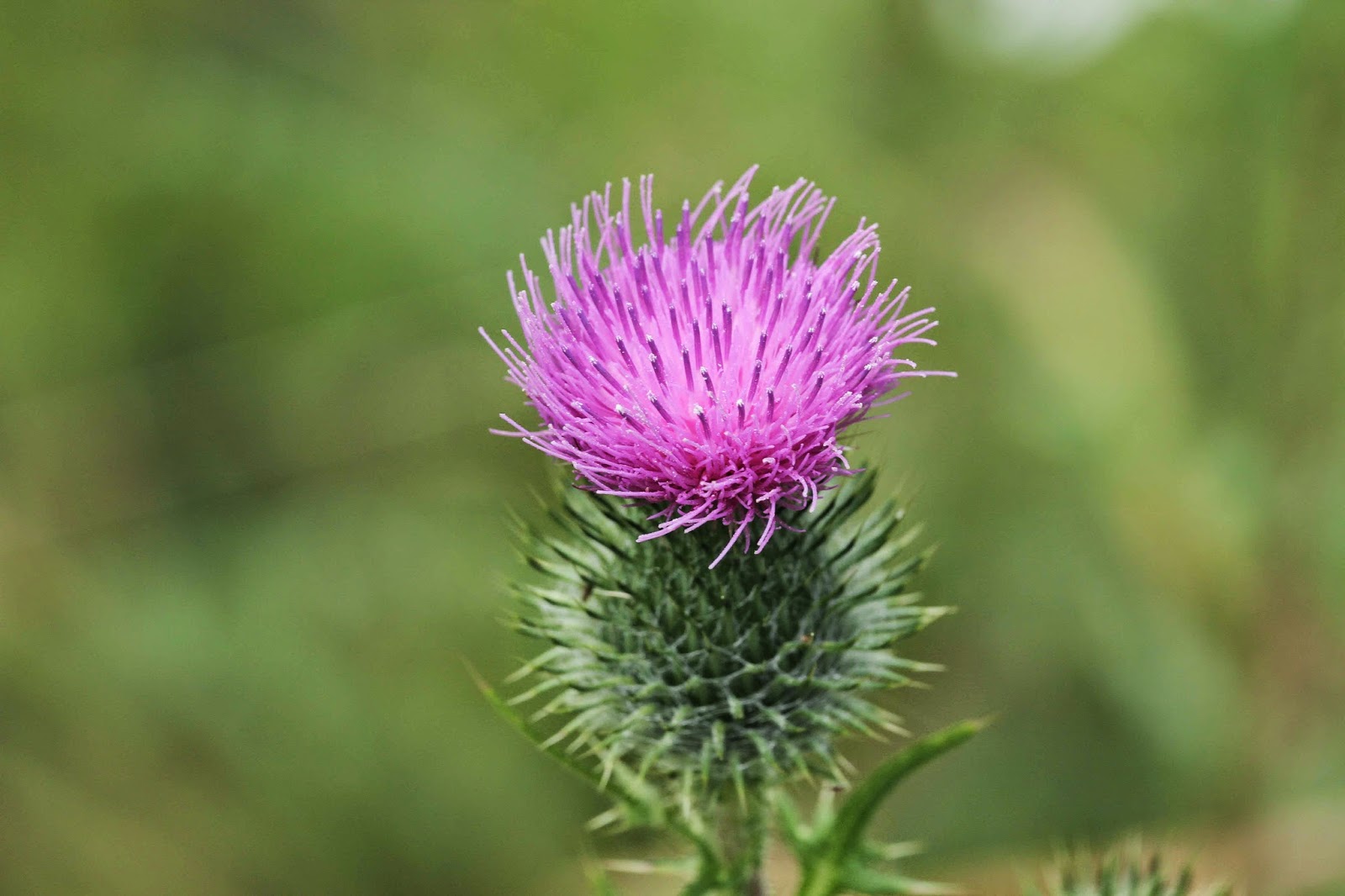On the reservoir banks there was a huge change in the obvious vegetation patterns. The lush mix of colour of a wide range of flowers in June has been replaced by a an almost complete cover of brown seeding grass, with dominating white Wild Carrot, Daucus carota, interspersed with a few plants of Bristly Oxtongue, Picris echioides. This is a view of the "Wild Carrot landscape" that clothed the whole of the top of the banks and the outer slopes.
On the internal banks themselves there was a bit more diversity with an apparent ecological zonation, of Common Fleabane, Pulicaria dysenterica, then Mayweed, Matricaria, and finally Grass and Wild Carrot, Daucus carota. It is interesting to speculate on the mix of physical, biological and temporal factors that created this pattern.
There was one very smart male Common Blue Butterfly on the Eastern bank of the reservoir, with great colour on the upperwing, but I only caught the undersides with the camera. Still it looked very fresh, fairly newly emerged.
Gatekeepers galore!
Several Gatekeeper "faces":
The scales of a butterfly or moth are extremely varied in form and function. Some of course are upright and fringed, the better to release the scent pheromones, such as those found in the male "sex-brands" mentioned in previous blogs or in tufts in some other species, but some are developed into extremely long hairs, as seen on the body and in these patches on the wings in this Gatekeeper. This explains why where on the insect you see the hairs you get fewer coloured scales (whether genuine pigment colours or refractive colours), a feature that I had noticed previously but never stacked up properly to draw the correct conclusion. The function of hairs is presumably primarily insulation - but I wonder how the presence of the hairs affects other things such as flight, and specifically drag, for example.
This should be a male, as it has the wide dark marks in the middle of the forewings.
The hairs on the underwing often appear more vertically orientated away from the wing - is this gravity or not? It doesn't look like it. If it's a deliberate difference, then could it be for aerodynamic purposes?
This is a fairly typical upper forewing, and again I think this should be a male with a wide dark smudge as a sex-brand in the middle of the forewing! It is nice to see the clear brown brand around the outer edge of the wing shared by both sexes, with a neat tiny fringe of hairs at the wing edge.
On the internal banks themselves there was a bit more diversity with an apparent ecological zonation, of Common Fleabane, Pulicaria dysenterica, then Mayweed, Matricaria, and finally Grass and Wild Carrot, Daucus carota. It is interesting to speculate on the mix of physical, biological and temporal factors that created this pattern.
There was one very smart male Common Blue Butterfly on the Eastern bank of the reservoir, with great colour on the upperwing, but I only caught the undersides with the camera. Still it looked very fresh, fairly newly emerged.
Gatekeepers galore!
Several Gatekeeper "faces":
The scales of a butterfly or moth are extremely varied in form and function. Some of course are upright and fringed, the better to release the scent pheromones, such as those found in the male "sex-brands" mentioned in previous blogs or in tufts in some other species, but some are developed into extremely long hairs, as seen on the body and in these patches on the wings in this Gatekeeper. This explains why where on the insect you see the hairs you get fewer coloured scales (whether genuine pigment colours or refractive colours), a feature that I had noticed previously but never stacked up properly to draw the correct conclusion. The function of hairs is presumably primarily insulation - but I wonder how the presence of the hairs affects other things such as flight, and specifically drag, for example.
This should be a male, as it has the wide dark marks in the middle of the forewings.
The hairs on the underwing often appear more vertically orientated away from the wing - is this gravity or not? It doesn't look like it. If it's a deliberate difference, then could it be for aerodynamic purposes?
This is a fairly typical upper forewing, and again I think this should be a male with a wide dark smudge as a sex-brand in the middle of the forewing! It is nice to see the clear brown brand around the outer edge of the wing shared by both sexes, with a neat tiny fringe of hairs at the wing edge.

































